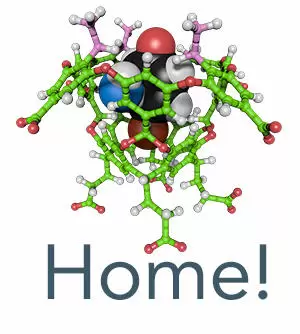Gibb, B. C. Judicial Chemistry. Nature Chemistry 2012, 4, 1-2..
Publications
2012
Tang, H.; de Oliveira, C. S.; Sonntag, G.; Gibb, C. L. D.; Gibb, B. C.; Bohne, C. Dynamics of a Supramolecular Capsule Assembly with Pyrene. Journal of the American Chemical Society 2012, 134, 5544-5547.
Gan, H.; Gibb, B. C. Guest-controlled self-sorting in assemblies driven by the hydrophobic effect. Chem. Commun. 2012, 48, 1656-1658.
The extent of self-sorting in systems comprised of two different deep-cavity cavitands is investigated. The nature of the guest(s) encapsulated in the resulting assemblies is shown to profoundly influence the extent of self-sorting.
2011
Gibb, B. C. A Tale of Two Compounds. Nature Chemistry 2011, 3, 749-751.
Gibb, B. C. The Two-week Sabbatical. Nature Chemistry 2011, 3, 495-496.
Gibb, B. C. Departments of History. Nature Chemistry 2011, 3, 261-262.
Gibb, B. C. The Emergence of Emergence. Nature Chemistry 2011, 3, 3-4.
Gibb, B. C. Supramolecular Assembly and Binding in Aqueous Solution: Useful Tips Regarding the Hofmeister and Hydrophobic Effects. Israel Journal of Chemistry 2011, 51, 798-806.
Abstract The self-assembly of structurally discrete entities, and supramolecular chemistry in general, continues to expand into the aqueous realm. To do so, however, requires a firm understanding of the properties of aqueous solution, and how these “change the rules” for binding and assembly relative to organic solvents. In this mini-review we highlight the state-of-the-art understanding of the supramolecular properties of water, and how these influence the design of hosts and self-assembling systems.
Li, Y.; Giles, M. D.; Liu, S.; Laurent, B. A.; Hoskins, J. N.; Cortez, M. A.; Sreerama, S. G.; Gibb, B. C.; Grayson, S. M. A versatile and modular approach to functionalisation of deep-cavity cavitandsvia “click” chemistry. Chem. Commun. 2011, 47, 9036-9038.
The surface modification of deep-cavity cavitands has been demonstrated by using the azide-alkyne “click” coupling to attach dendritic macromolecules or linear polymers onto their periphery. The resulting set of macromolecular cavitands exhibited tuneable solubility yet retained the ability to encapsulate guest molecules.
Gibb, C. L. D.; Gibb, B. C. Anion Binding to Hydrophobic Concavity Is Central to the Salting-in Effects of Hofmeister Chaotropes. Journal of the American Chemical Society 2011, 133, 7344-7347.

